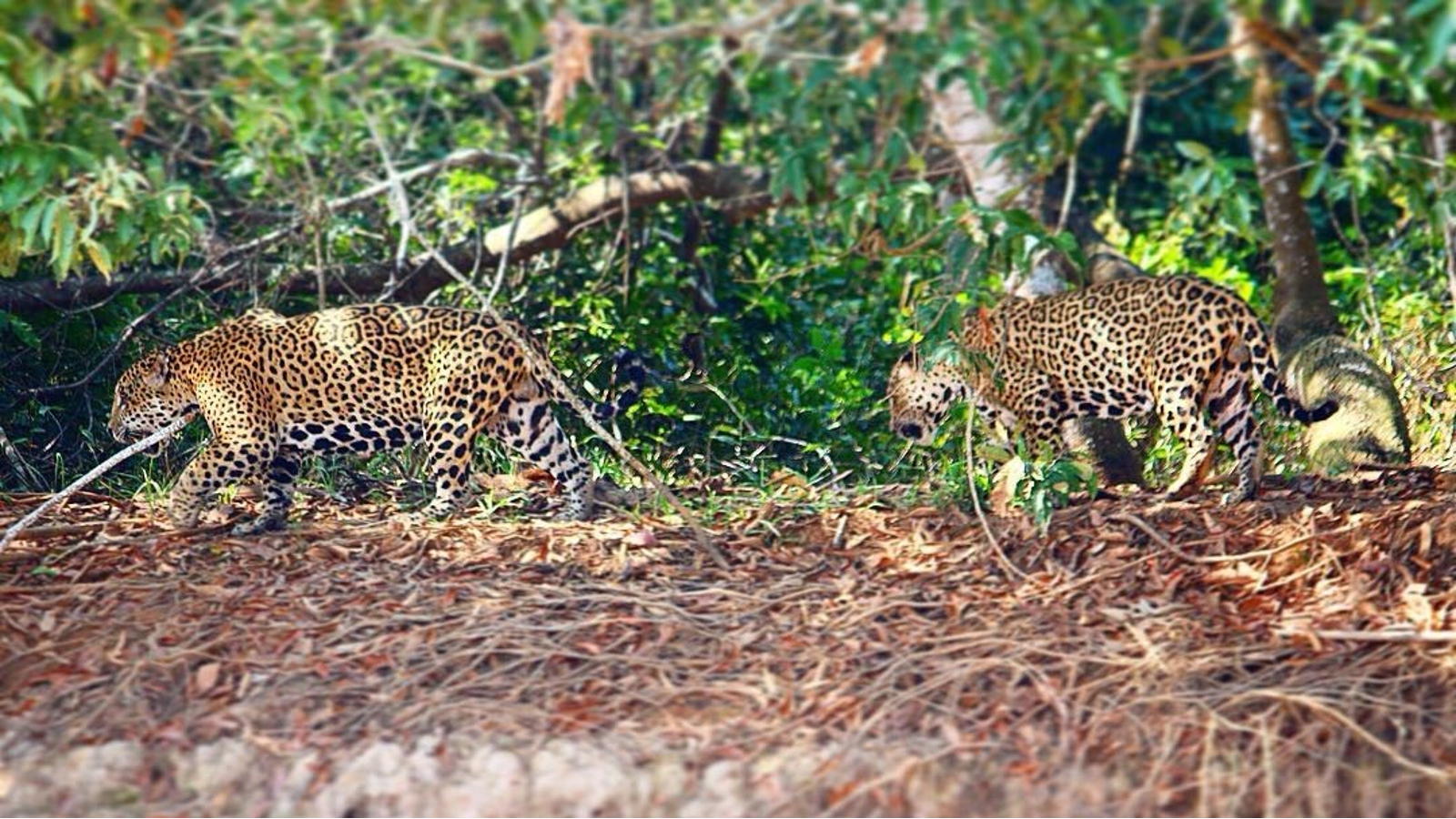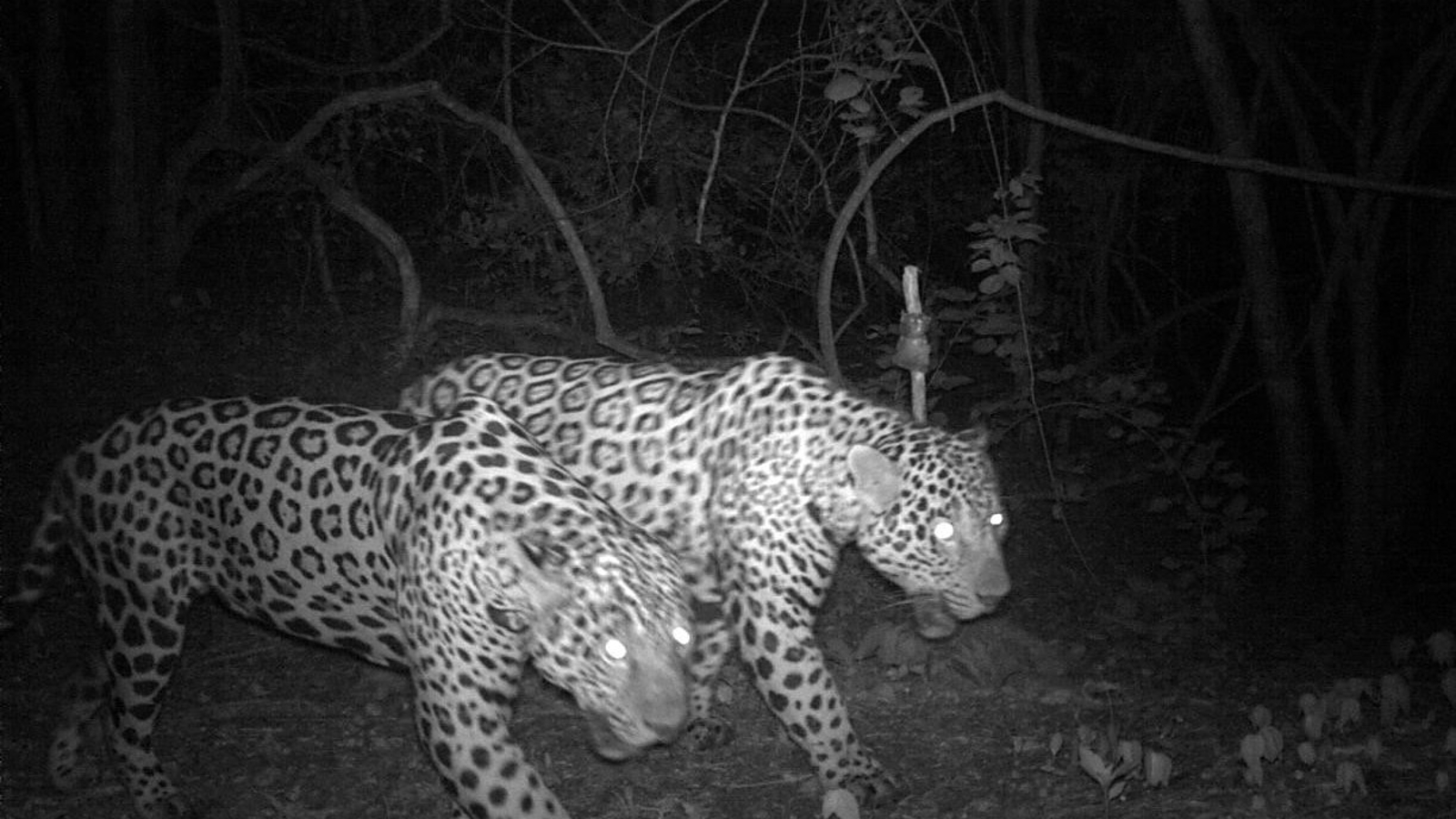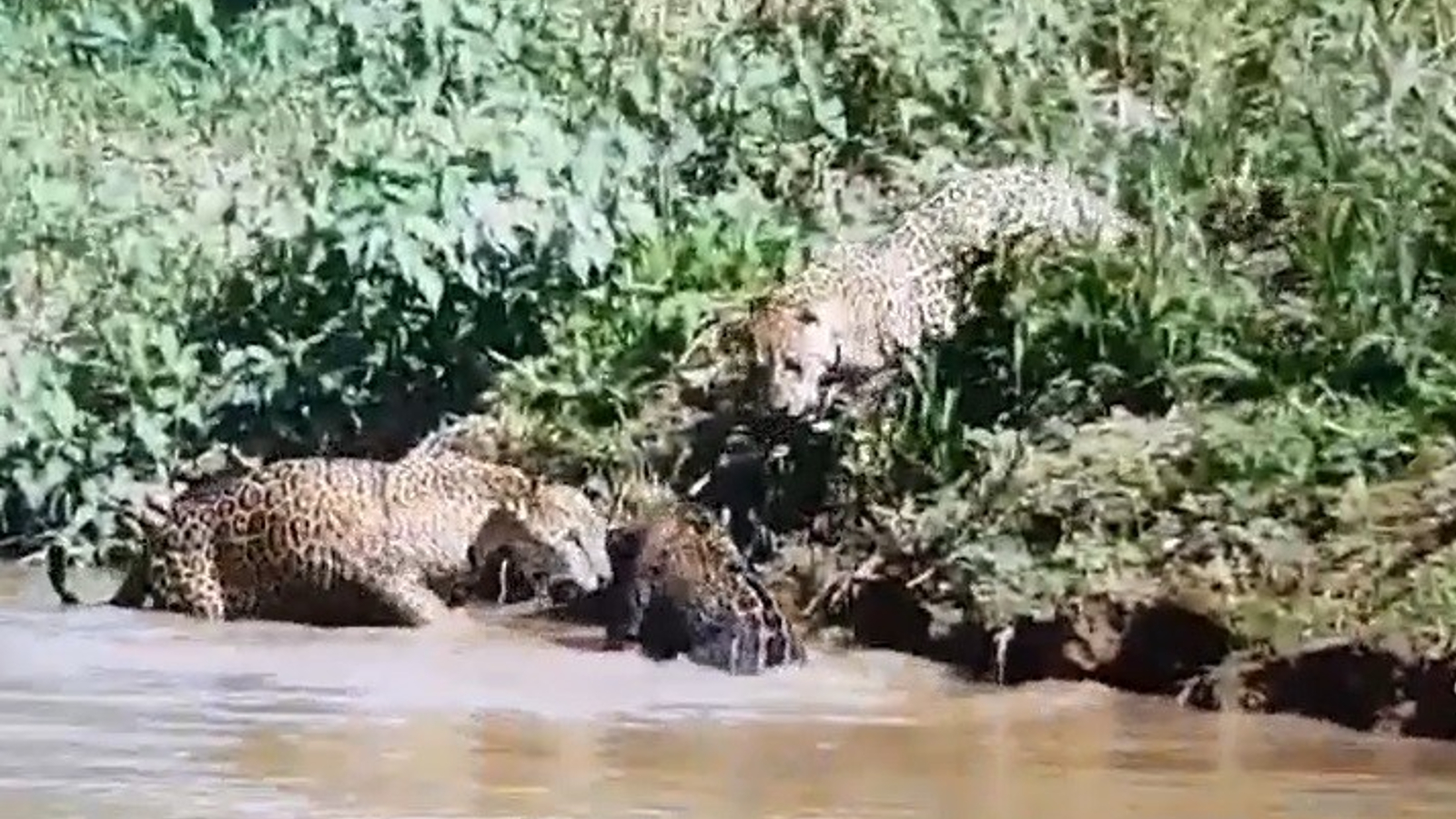Male jaguar rivals pair up for years in unexpected bromances
Researchers in South America have observed two examples of never-before-seen alliances between rival male jaguars.

Rival male jaguars are unexpectedly teaming up for years at a time to search for mates, researchers have found.
Male jaguars are usually solitary creatures that spend the majority of their lives wandering alone in the wilderness, only crossing paths with other jaguars to mate with females or to defend their territory from rivals.
However, in an unexpected twist, researchers have uncovered evidence of rare and never-before-seen male jaguar (Panthera onca) pairs that live closely alongside one another for up to seven years. The big cats likely form these unlikely alliances because potential female mates have become more geographically concentrated, which has forced the male big cats to share individual territories between them.
In a new study, published earlier this year in the journal Behavioral Ecology and Sociobiology, researchers analyzed camera trap footage, GPS data and in-field observations from five different studies carried out across South America, and they uncovered two examples of these male big-cat bromances. In both cases, the coalitions lasted for at least five years before the unlikely friends parted ways.
Related: Jaguar kills another predatory cat in never-before-seen footage
"This novel finding shows that, when it serves their purpose of gaining greater access to prey, mates, and territory, wild male jaguars may collaborate, cooperate, and even form long-term relationships with former competitors," study co-author Allison Devlin, a big cat ecologist and deputy director of the jaguar program at the big-cat conservation organization Panthera, said in a statement.
The team analyzed more than 7,000 records of jaguars and found 105 interactions between males. Of these male interactions, 18 were considered to be aggressive, nine were deemed as social intolerance — meaning the males kept their distance from one another but didn't clash — and 70 showed signs of cooperation, with the rest being uncategorized. But after looking closely at the cooperative interactions, the team realized that these behaviors were mainly from two different bromances.
Sign up for the Live Science daily newsletter now
Get the world’s most fascinating discoveries delivered straight to your inbox.
The first pair was observed in the Brazilian region of the Pantanal, a vast wetland ecosystem that stretches into Bolivia and Paraguay. This alliance started in 2006 and ended in 2014 when one of the jaguars was likely killed. The pair patrolled territories together, communicated vocally with one other, rested side by side and on one occasion even shared a meal together.


The second pair was seen between 2013 and 2018 in Los Llanos, a flat depression that covers around a quarter of Venezuela. Surprisingly, both jaguars in this pair successfully mated with multiple females during this time. It is unclear what happened to the pair after 2018.
Two more pairs of male jaguars were spotted in the Brazilian Pantanal, in 2010 and 2019, but these toothy twosomes were only seen together on one occasion each.
After identifying the unlikely bromances, the researchers turned their attention to what may be causing the jaguars to buddy up.
Initially, the team suspected that the alliances were born from cooperative hunting. However, in both habitats in which the pairs were seen, there was an abundance of available prey, such as capybaras, tapir, caimans, turtles and domestic livestock. Additionally, in sightings, none of the duos showed evidence of cooperative hunting.
Instead, the researchers believe that the bromances are a response to an increasingly high concentration of available females. In both cases, the geographical ranges of female jaguars have decreased due to habitat destruction and poaching, meaning there are more females in a smaller area. The team suspects that the male jaguars are teaming up to split up the potential mates between them rather than risk losing their territory to another male. The successful breeding by both males in the Venezuelan jaguar pair suggests that this is most likely the case.
Cooperation between males has been previously observed in lions and cheetahs, but in these species the coalitions normally contain more than two individuals and are set within a group structure. In lions and cheetahs, alliances are also influenced by the number of available females but to a lesser degree.
The researchers are excited to have discovered the new behavior but are cautious about how significant it could be because of how rare it is. In the study, just 0.1% of total male jaguar sightings included cooperative behavior between males.
The team also acknowledges that further multi-generational studies are needed to show if there is any evolutionary benefit to the newly observed behavior.
"The secret life of jaguars is more complex than previously thought," Devlin said. "We still have so much to learn about the intricate lives of these secretive wild cats."

Harry is a U.K.-based senior staff writer at Live Science. He studied marine biology at the University of Exeter before training to become a journalist. He covers a wide range of topics including space exploration, planetary science, space weather, climate change, animal behavior and paleontology. His recent work on the solar maximum won "best space submission" at the 2024 Aerospace Media Awards and was shortlisted in the "top scoop" category at the NCTJ Awards for Excellence in 2023. He also writes Live Science's weekly Earth from space series.









